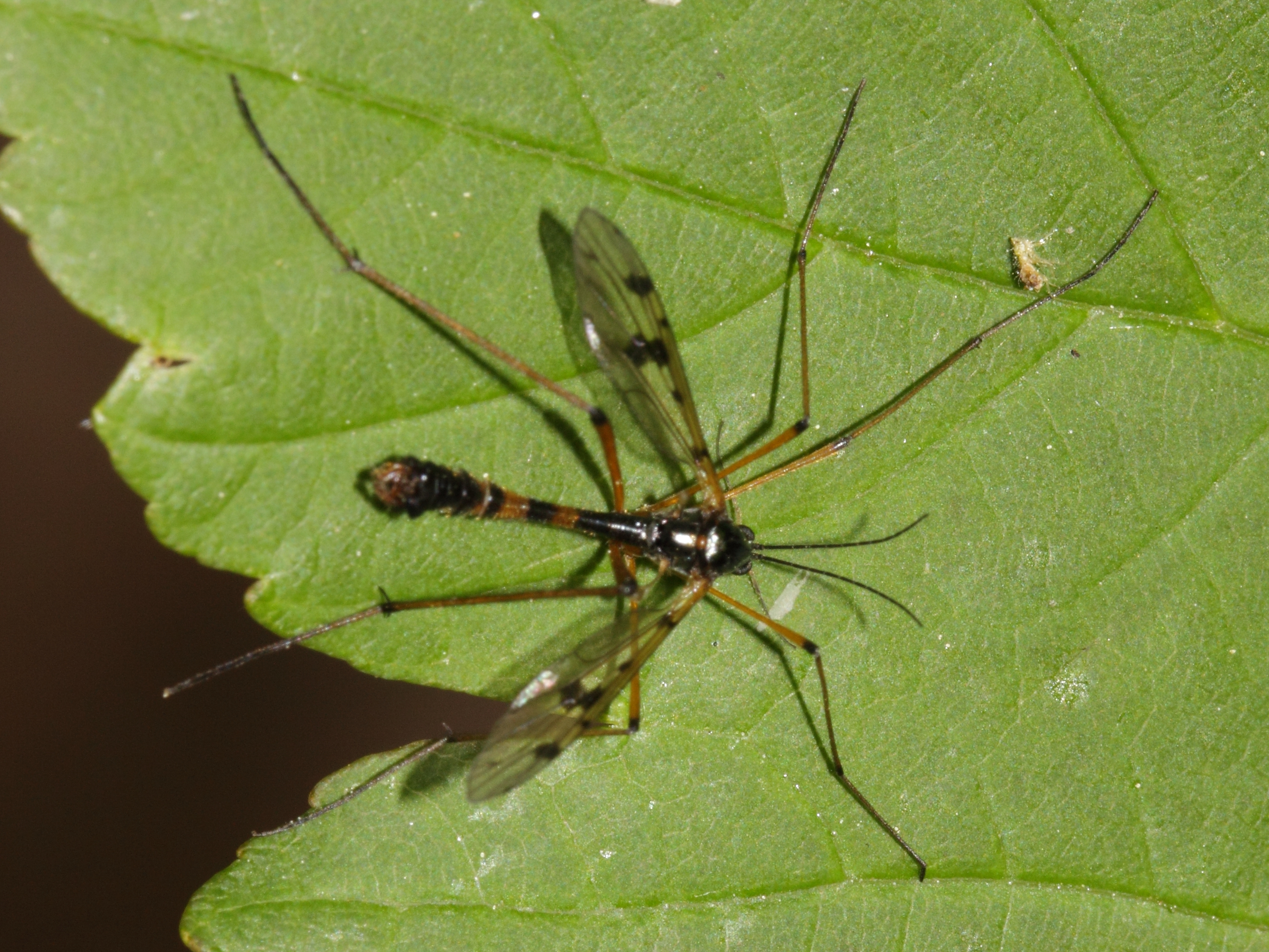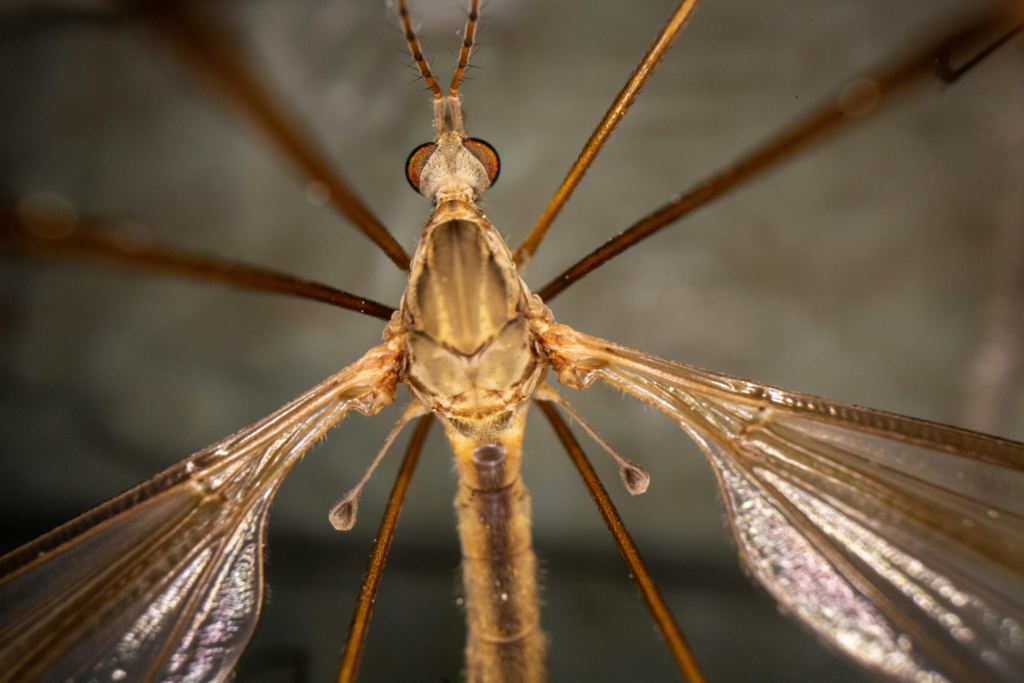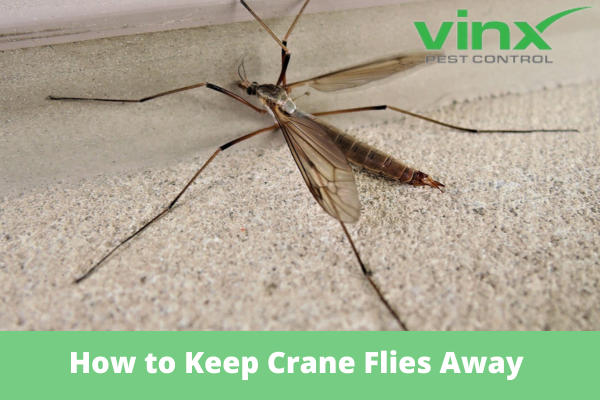Crane flies are seen in many places in the United States and worldwide. They are often called mosquito hawks or mosquito eaters. But, they don’t really eat mosquitoes.
If you want to know how to keep crane flies away, you’re not alone. Many people worry about these bugs near their homes. We will share tips to keep crane flies out of your home. At Vinx Pest Control, we help with pest problems, like crane flies.
Key Takeaways
- Eliminate standing water around your home to reduce moisture.
- Maintain your lawn by regularly mowing grass and trimming vegetation.
- Ensure windows and doors have intact screens.
- Seal any cracks or gaps in your home’s exterior.
- Use natural deterrents like essential oils or vinegar sprays.
Understanding Crane Flies: Myths and Facts
At Vinx Pest Control, we often talk to homeowners worried about crane flies. These bugs are not as scary as they seem. They are not a danger to people. It’s important to know the truth about them.
Common Misconceptions About “Mosquito Hawks”
Many think crane flies are mosquito hawks. But, this is not true. Crane flies actually drink nectar from flowers. They even help pollinate plants.

The Truth About These Harmless-Looking Insects
Crane flies may look scary, but they are not aggressive. They don’t harm other insects or animals. Here are some facts to clear up myths:
- Crane flies do not bite humans or animals.
- They are not vectors of diseases.
- Their larvae, often referred to as leatherjackets, can cause lawn damage.
Do Crane Flies Actually Bite?
No, crane flies do not bite. They don’t have the right mouthparts for biting. They are safe for humans and pets.
Relationship to Mosquitoes
Crane flies look like mosquitoes, but they are not. They are in a different family. Crane flies don’t drink blood. For tips on dealing with crane flies and other pests, see our guide on how to get rid of them in 5 steps.

Identifying Crane Flies and Their Larvae
To fight a crane fly problem, you must know how to spot them and their young. Spotting them right is key to controlling their numbers. This helps protect your lawn and garden.
Physical Characteristics of Adult Crane Flies
Adult crane flies look like big mosquitoes but are safe for people. They have long legs and bodies that can be gray or brown.
Size, Color, and Distinctive Features
Crane flies are 1/4 to 1 inch long. Their wings are clear or a bit smoky. They fly in a special way. Knowing these traits helps you spot them.
How to Spot Crane Fly Larvae (Leatherjackets)
Crane fly larvae, or leatherjackets, harm lawns by eating grass roots. They are grayish-brown, have no legs, and a clear head.
Where to Look in Your Yard
To find leatherjackets, look at wilting or dying lawn spots. Check wet, grassy areas, like near ponds. For tips on controlling crane flies, check out home remedies for crane flies.
The Complete Lifecycle of Crane Flies
To manage crane flies well, knowing their lifecycle is key. They go through four stages: eggs, larvae, pupae, and adults. Knowing these stages helps us fight them better.
From Eggs to Adults: Understanding Their Development
The journey starts with eggs, laid in wet soil or near water. The larvae, or leatherjackets, eat plant roots and organic stuff. This can harm lawns and gardens. After growing, they turn into pupae and then into adult crane flies.

Seasonal Patterns and Peak Activity Periods
Crane flies follow certain seasons. Adults are seen in late summer or early fall. Some may come out in spring.
Spring and Fall Emergence Patterns
There are two main times they come out:
- Spring Emergence: Some crane flies come out in spring, around March or April.
- Fall Emergence: Most come out in fall, between August and October.
Knowing when they come out helps us control them better.
Why Crane Flies Are Attracted to Your Home
Crane flies like to be near your home for a few reasons. These reasons are about your home’s environment and its structure. Knowing these reasons helps you start getting rid of crane flies.
Environmental Factors That Draw Them In
Crane flies love moist places and lots of plants. If your home area is like this, it’s a perfect spot for them.
Moisture and Vegetation Issues
Too much water, like from too-wet plants or bad drainage, draws crane flies. Also, thick plants and messy gardens give them places to hide and lay eggs.
- Check for overwatered plants and adjust your watering schedule.
- Improve yard drainage to prevent waterlogging.
- Maintain your garden by pruning plants and removing weeds.
Common Entry Points Around Your House
Crane flies can sneak into your home through many ways. Homeowners often let this happen without meaning to.
Identifying and Sealing Vulnerabilities
Look at your home’s outside for open windows, torn screens, and gaps around doors and vents. Fixing these spots helps keep crane flies out.
- Install or repair window screens.
- Seal gaps around doors and vents with caulk or weatherstripping.
- Keep windows and doors closed, specially when crane flies are active.
Potential Problems Caused by Crane Fly Infestations
Crane fly infestations can harm your lawn and garden. Adult crane flies are not harmful. But, their larvae, or leatherjackets, can damage a lot.

Lawn and Garden Damage from Larvae
Crane fly larvae eat plant roots and leaves. This weakens your lawn and garden. It can make:
- Grass turn yellow or brown
- Plants wilt or die
- Plants more likely to get sick or attract pests
Signs of Leatherjacket Activity
To spot leatherjacket activity, look for these signs:
- Lawn looks patchy or uneven
- Birds or animals digging in the lawn
- Visible damage to plant roots
Nuisance Factors of Adult Crane Flies
Adult crane flies don’t bite or sting. But, they can be a big nuisance. They can gather around homes in large numbers.
This can be very annoying, more so during their busy times. It’s important to deal with the infestation to stop more problems.
Knowing the problems crane fly infestations can cause helps homeowners act fast. They can protect their lawns and gardens. Using good crane fly pest control can prevent a lot of damage.
Natural Prevention Methods for Crane Flies
We can keep crane flies away by using natural ways. These methods target their homes and life cycle. Knowing what draws them helps us stop them.
Lawn and Garden Maintenance Strategies
Keeping your lawn and garden neat is key. This means:
- Proper mowing to cut tall grass and weeds.
- Watering right to avoid too much water.
- Removing debris and clutter where larvae hide.
Proper Watering and Mowing Techniques
Don’t overwater your lawn. It makes the soil perfect for crane fly larvae. Water deeply but not too often. This helps your lawn grow strong and keeps crane flies away.
Also, keep your lawn mower high. This shades the soil and stops larvae from growing.
Creating Barriers and Deterrents
Use barriers to keep crane flies out. You can:
- Seal up entry points around your home.
- Use fine mesh to cover plants.
- Plant things that keep crane flies away.

Beneficial Predators That Control Crane Fly Populations
Nature has its own way of keeping things balanced. Some animals eat crane flies and their young. This helps control their numbers.
Birds, Insects, and Other Natural Enemies
Birds, spiders, and other insects eat crane flies. By welcoming these helpers, we can fight crane flies naturally. This includes:
- Setting up birdhouses and feeders.
- Having a garden that attracts good bugs.
- Not using harmful pesticides.
Using these natural methods helps keep crane flies away. We don’t need to use harsh chemicals.

DIY Crane Fly Control Solutions
We can fight crane fly problems at home with DIY solutions. These methods are good for the planet and work well. They are a smart start to keep crane flies away.
Homemade Traps and Repellents
One easy way to catch adult crane flies is with homemade traps. You can make a light trap or a sticky trap. For example, a light trap uses a bright light near soapy water. Crane flies are drawn to the light and get caught in the soapy water.
Light Traps and Sticky Traps
Light traps work because crane flies like light. Sticky traps catch flies on a sticky surface. To make a sticky trap, use honey or petroleum jelly on a surface and place it where flies are seen.
Natural Remedies for Larvae Control
Dealing with crane fly larvae, or leatherjackets, needs a special plan. One good natural fix is using nematodes. These tiny worms eat and kill the larvae.
Nematode Applications
Nematodes are a safe way to control larvae in the soil. They are okay for people, pets, and good bugs but kill crane fly larvae. To use nematodes, apply them to wet soil in late afternoon or early evening. Then, water the area well after applying.
When and How to Apply DIY Treatments
When you use DIY treatments is key to their success. For larvae, treat in early spring or fall when they are most active.
Timing for Maximum Effectiveness
To get the best results, match your DIY treatments with the crane fly life cycle. Use traps for adults in late summer and early fall. For larvae, treat in spring or fall when they are most active.
Professional Crane Fly Management by Vinx Pest Control
Crane flies can be a big problem. If they won’t go away, it’s time to call Vinx Pest Control. They have the tools and knowledge to handle it.
When to Call the Experts
Need help with lots of crane flies? Or if they keep coming back? It’s time to call the pros.
Signs of Severe Infestation
- Many adult crane flies in your home or yard
- Lawn or garden damage from crane fly larvae
- Seeing crane flies for many seasons
Professional Treatment Methods and Their Effectiveness
Vinx Pest Control uses many ways to fight crane flies. Their team finds the problem and fixes it.

Long-Term Prevention Plans
Vinx Pest Control also helps prevent future problems. They make plans just for your place.
Customized Solutions for Your Property
Vinx Pest Control knows your lawn and garden. They make a plan to keep crane flies away. This way, you can enjoy your outdoor spaces without pests.
Integrated Pest Management for Crane Flies
Managing crane flies well needs many steps. We use Integrated Pest Management (IPM). It mixes different ways to control pests in a good way.
Combining Multiple Control Strategies
To fight crane flies, we mix different ways. We use cultural, biological, and chemical methods.
- Cultural controls change how we care for lawns to stop crane fly larvae. This is key in crane fly larvae control.
- Biological controls bring in natural enemies of crane flies. This helps with insect identification and control.
- Chemical controls use special pesticides when needed.
Environmentally Responsible Approaches
We focus on safe ways to handle crane flies. We choose methods that don’t hurt good bugs too much.
Low-Impact Methods for Sensitive Areas
In places like near water or organic gardens, we use gentle ways to fight crane flies. These include:
- Using safe pesticides that go after crane fly larvae.
- Doing things to stop crane flies from coming back.
Seasonal Maintenance Calendar
A calendar for the seasons helps stop crane flies from coming back. We do regular tasks like:
Monthly Tasks to Prevent Recurrence
- Watching lawns for crane fly larvae when they’re most active.
- Changing lawn care with the seasons to keep crane flies away.
- Using special treatments when it’s needed.
Conclusion: Keeping Your Home Crane Fly Free
We can keep crane flies out of our homes by learning about them. We’ve looked at myths and facts, their life cycle, and why they like our houses. Using natural ways to prevent them, like taking care of our lawns and gardens, helps a lot.
For big problems, we can try DIY fixes or call experts like Vinx Pest Control. Using many methods together and being kind to the environment is the best way to keep crane flies away. By being proactive, we can make our homes crane fly-free and avoid the trouble they bring.
We can stop crane flies from bothering us. By knowing what to do and taking action, we can keep our homes safe from these pests.
FAQ
Q: What are crane flies, and are they harmful?
A: Crane flies look like big mosquitoes but don’t bite or spread diseases. But, their young can harm lawns and gardens a lot.
Q: How do I identify crane flies and their larvae?
A: Crane flies have long legs and big wings. Their young, or leatherjackets, are grayish-brown and look like leather. They live in wet soil and thick plants.
Q: What attracts crane flies to my home?
A: Crane flies like wet places and thick plants. They get into homes through open doors and windows.
Q: How can I prevent crane fly infestations?
A: Keep your lawn dry and clean. Don’t water too much. Use barriers and attract helpful bugs that eat crane flies.
Q: What are some natural methods to control crane flies?
A: Use homemade traps and repellents. Natural remedies can help with young crane flies. Apply beneficial nematodes to your lawn.
Q: When should I seek professional help for crane fly infestations?
A: If crane flies are everywhere and DIY doesn’t work, call Vinx Pest Control. They offer good treatments and plans to keep them away.
Q: What is integrated pest management for crane flies?
A: It’s using many ways to control them. It’s safe for the environment and follows a yearly plan.
Q: How can I keep my home crane fly-free?
A: Know their life cycle and use good prevention and control. Keep your lawn and garden nice. Check your home and yard for crane flies and act fast.
Q: What is the lifecycle of crane flies?
A: They go through four stages: eggs, larvae, pupae, and adults. Knowing this helps manage them better.
Q: How can I control crane fly larvae?
A: Use natural remedies like nematodes or insecticidal soap. Also, improve soil drainage and aeration to stop larvae growth.



